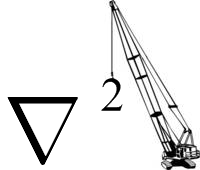Subphylum Chelicerata
Chelicerates lack antennae and typically have six pairs of appendages: the chelicerae (pointed appendages used to grasp food); the pedipalps (or leglike appendages in horseshoe crabs), which have lobes that serve as jaws; and six pairs of legs. Usually the body has two divisions: the prosoma (or cephalothorax) which bears the chelicerae and anterior portion ("head") of the animal, and the opisthosoma (or abdomen).
Class Arachnida
Arachnids have four pairs of legs, and two pairs of additional appendages, the chelicerae and the pedipalps (used for sensing and locomotion). There are 11 recognized orders, and are by far the largest and most important class of chelicerates, with over 65,000 described species (8,000 in North America).
Order Araneae
Spiders are divided into two suborders: the Mesothelae and Opisthothelae. The Mesothelae are restricted to Japan and Southeast Asia, and retain features of primitive spiders (the order can be traced back to the Devonian) such as segmentation of the abdomen and ventral spinnerets. The suborder Opisthothelae is broken into two infraorders, the Mygalomorphae (large spiders such as tarantulas) and Araneomorphae.
- Family Theridiidae - Cobweb Spiders: These spiders have abandoned the orb web in favor of a mesh sheet or three-dimensional cobweb, although some have adopted a kleptoparasitic lifestyle. They are usually eight-eyed (rarely six-eyed or blind) with a high clypeus (sclerite on lower part of face: think "upper lip area"); they may have a stridulatory organ above the pedicel between the carapace and abdomen. Theridiids may have a comb of serrated setae on the fourth tarsus. The tarsal comb is used to wrap prey in silk before envenomation. They rarely have teeth on the retrolateral margin of the chelicerae; teeth on the promargin occur, but are also rare. The paracymbium, if present, is fused to the retrodistal part of the cymbium; the palpal tibia never has apophyses. The colulus is reduced or absent in some theridiids. This family includes the widow spiders (Latrodectus), known for their potent venom. Also represented among the 250 or so North American theridiid species are social spiders (Anelosimus) and kleptoparasites (Argyrodes).
- Family Araneidae - This is a diverse family, nearly all of which construct an orb web. Included in this group are the distinctive day-active spiny orb-weavers of the genera Gasteracantha and Micrathena, the garden spiders of the genus Argiope, and the Bolas spiders (Mastophora). Bolas spiders have abandoned the orb web; they use aggressive chemical mimicry to lure male moths, which they disable by striking them with a globule of sticky silk swung on the end of a line. There are 163 araneid spiders widely distributed in North America.
- Family Thomisidae - These somewhat flattened spiders lack scopulae and claw tufts. The lateral eyes are often larger than medians and positioned on tubercles. The chelicerae are almost always without teeth, or have both margins toothed. Legs I and II are longer and thicker than legs III and IV. One common species in this group is the goldenrod spider (Misumena vatia), which is white or yellow with a red band on either side of the abdomen. This spider is a sit-and-wait predator, often occupying a flower and attacking pollinators. This spider can change color, over a period of a few days, depending on the color of the flower. There are over 140 species of thomisids in North America.
- Family Salticidae - Jumping Spiders: These stout-bodied, short-legged spiders have a distinctive eye pattern, with the anterior median eyes by far the largest. The body is rather hairy and is often brightly colored or iridescent. Some species are antlike in appearance. Jumping spiders forage for prey in the daytime, approach their prey slowly, and then suddenly leap onto it. They can jump many times their own body length. Before jumping, they attach a silk thread dragline, which they use to climb back to their starting location. Salticids are the world's most diverse spider family, with over 330 representatives in North America.
- Family Theraphosidae - Tarantulas: These distinctive, conspicuously hairy two-clawed spiders are among the largest U.S. species (8-34 mm). They build open burrows, although these may be closed during the day by a thin sheet web or plugged with soil during the winter. Despite their reputation, the venom of North American tarantulas is not dangerous. However, they can produce clouds of urticating hairs by rubbing their abdomen with their hind legs. These hairs can irritate the mucous membranes of mammals, such as the eyes and respiratory passages. There are 57 species in the southwestern U.S.
Order Ixodida (Acari)
Ticks and mites (Acari) constitute a very large group of animals, with more than 30,000 described species. The body is usually oval, with little distinction between the two regions. There are both aquatic and terrestrial forms, and many are parasitic on both vertebrates and invertebrates. Many free-living forms are predaceous, and some of these prey on undesirable arthropods. Many are also scavengers and plant feeders.
Ticks (Ixodida) consist of two families in North America, and are parasitic. Those attacking humans are annoying pests, and some species serve as disease vectors.
- Family Ixodidae - These ticks are the hard ticks that attack dogs, deer, cattle, other livestock, and humans. They may serve as vectors for Rocky Mountain spotted fever, Lyme disease, relapsing fever, tularemia, Texas cattle fever, and Colorado tick fever.
Under Construction
